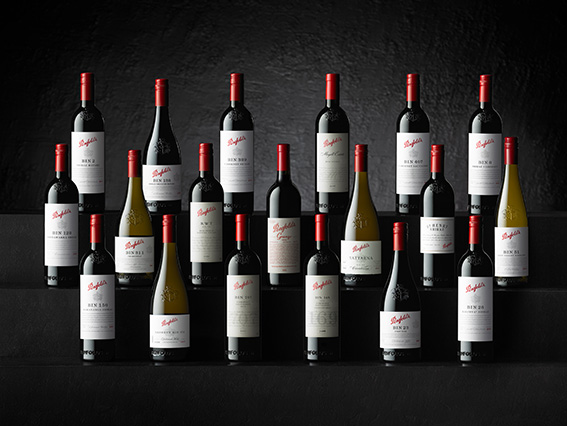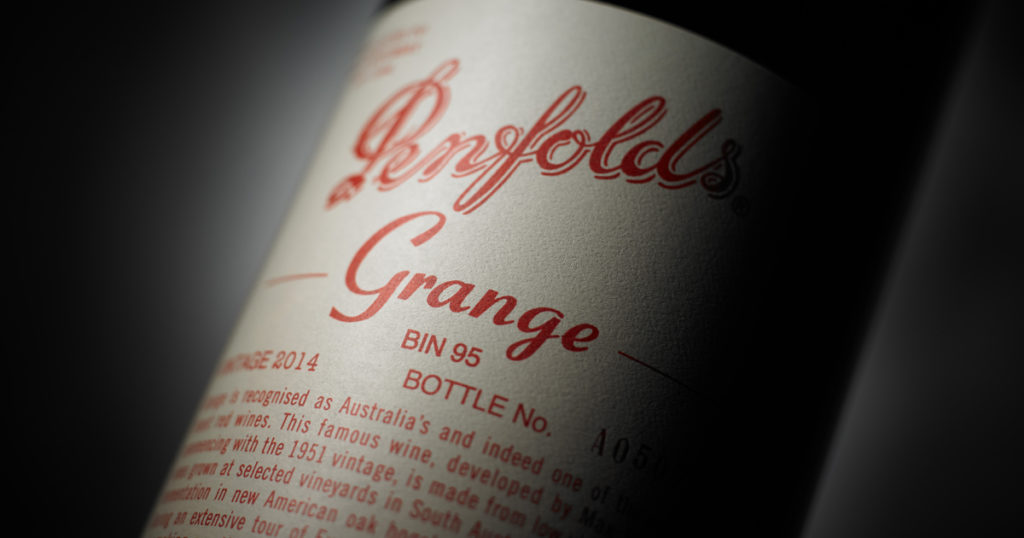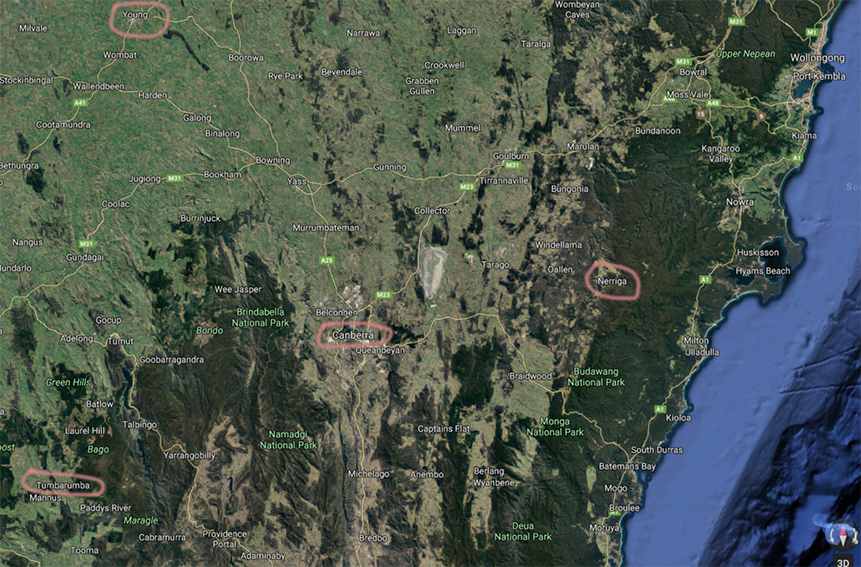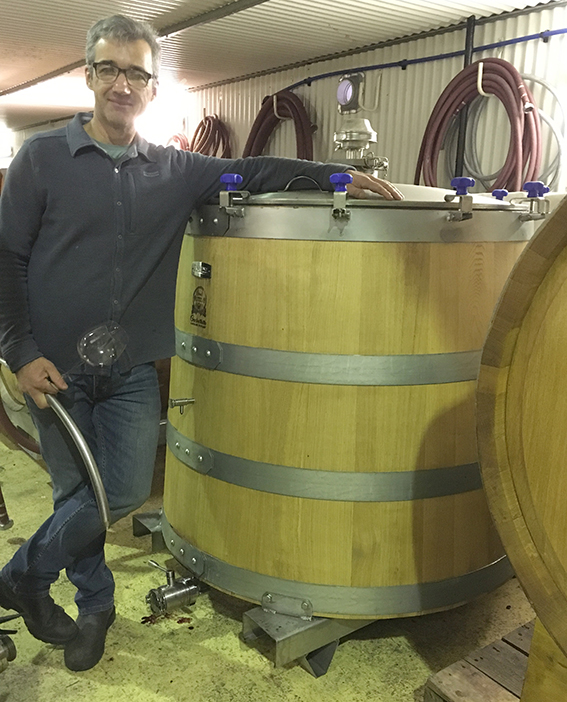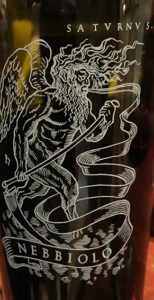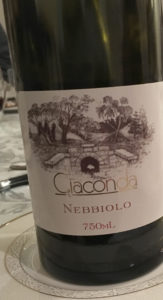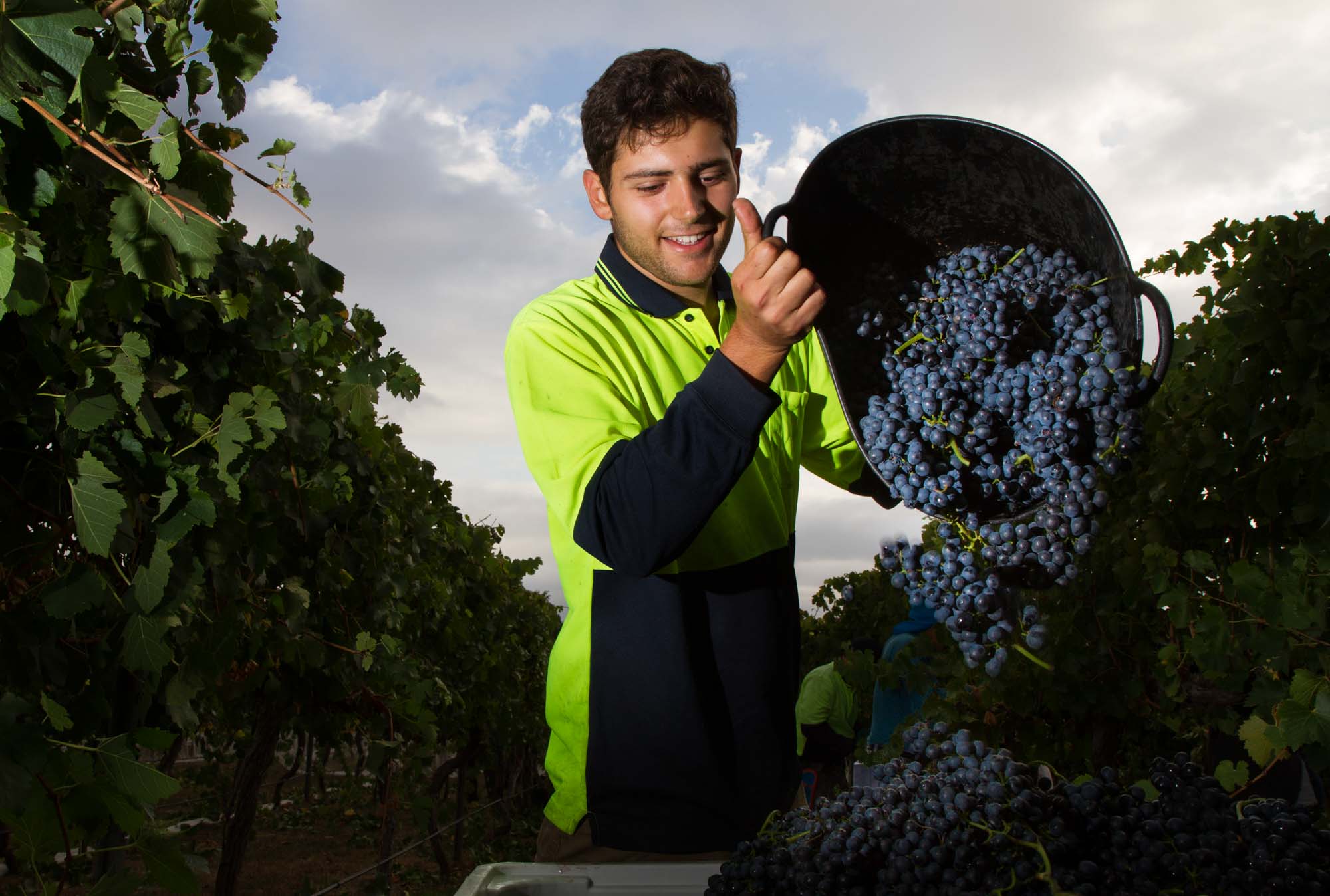The tasting notes in this post represent a wide range of wine styles from regions sprinkled along the Great Dividing Range in southern New South Wales: Tumbarumba, Orange, Gundagai, Hilltops and the Canberra District.
I wrote the notes for Jugiong Wine Cellar website. The cellar (located at Jugiong, between Yass and Gundagai) lies at the centre of these high-country regions and specialises in the local wines.
Jugiong, a few minutes drive off the busy M31 linking Sydney and Melbourne, draws tens of thousands of visitors annually, attracted by delicious food at Long Track Pantry and beautifully restored Sir George Hotel and the local wine and artwork offered by Jugiong Wine Cellar.
TUMBARUMBA REGION
Barwang Tumbarumba Pinot Gris 2016
The pinot grape yields its best flavours in a cool climate like Tumbarumba’s. Barwang’s version captures the variety’s plush, smooth texture and tangy pear-like character, while natural acidity gives extra vibrancy to the refreshing dry finish.
Barwang Tumbarumba Chardonnay 2016
For a modest price, Barwang provides the rich, satisfying flavour and smooth texture of cool climate, barrel-fermented chardonnay. Stone-fruit-like varietal flavour combines with subtle, spicy oak character on a full, finely-textured palate with a dry, refreshing finish.
Chalkers Crossing Tumbarumba Sauvignon Blanc 2014
The majority of white sauvignons come from the current vintage and present pure, fresh, grapey flavours. Winemaker Celine Rousseau, however, used a little oak in this one to build additional texture, body, and subtle spicy character. Four years’ age adds another honeyed layer of flavour to an enjoyable if unconventional sauvignon blanc.
Chalkers Crossing Tumbarumba Chardonnay 2014
Winemaker Celine Rousseau carved a great reputation at Chalkers Crossing before moving to Canberra’s Eden Road Wines in 2017. We still have limited stock, however, of this lovely chardonnay Celine made, using fruit from the Maragle Creek vineyard, Tumbarumba. A few years’ bottle age has given a lovely honeyed character to a smooth, full-bodied chardonnay.
Excelsior Peak Tumbarumba Sauvignon Blanc 2014
Excelsior’s Juliet Cullen pioneered grape growing in Tumbarumba in the early 1980s, originally for sparkling wine. She now focuses on table wines, including sauvignon blanc. Juliet’s 2014 vintage has shifted from youthful, all-fruit flavours displayed by the young wine, to a more plush and savoury flavour. It offers an interesting comparison to younger wines made from this variety.
Johansen Tumbarumba Gamay 2017
In France’s Beaujolais region, the gamay grape makes generally vibrant, fresh, fruity reds meant for immediate consumption. Johansen’s Tumbarumba version presents a slightly more austere version of the grape: The wine’s pale to mid coloured, showing aged hues at the rim; the aroma provides both savour and fruit, and the lean structure combines acidity with fine tannins.
Johansen Tumbarumba Pinot Noir 2015
Robert and Heather Johansen’s pinot noir, grown at around 700 metres above sea level, shows typically pale colour of the variety grown in cool conditions. The colour shows a touch of age and the aroma suggests the stemmy character of whole bunches included in the ferment. The stemmy character comes through on a silky textured, medium wine that finishes with a light astringency.
Johansen Tumbarumba Riesling 2017
Robert and Heather Johansen’s riesling shows the strong lemon-like varietal flavour and zingy, fresh acidity expected from Tumbarumba’s cool growing climate. The refreshing acid accentuates the wine’s flavour and dry finish. This is a lighter aperitif style to enjoy on its own or with a wide range of foods.
McW 480 Tumbarumba Pinot Grigio 2017
McWilliams, one of Australia’s larger family owned wineries, produces its McW 480 range from vineyards averaging 480 metres altitude in the high country of NSW. The cool climate produces richly flavoured pinot grigio with varietal flavours reminiscent of pear. Crisp acidity and pinot’s rich texture create a unique medium bodied dry white to enjoy young and fresh.
Moppity Vineyards Lock and Key Tumbarumba Pinot Noir Chardonnay 2016
Tumbarumba was originally planted in the early 1980s to produce high quality sparkling wine. The area’s high altitude, cool vineyard sites continue to produce the right fruit, as we can taste in Lock and Key’s blend of 65% pinot noir, 35% chardonnay and 5% pinot meunier. The key is to use fruit that develops ripe flavour while acid levels remain high. Lock and Key offers tremendously good value as it has offers a harmony of delicate but ripe flavours on soft, bracingly fresh palate.
Moppity Vineyards Lock and Key Adelaide Hills – Tumbarumba Pinot Noir 2017
Moppity Vineyards own sites in the Hilltops region and in nearby Tumbarumba. Tumbarumba’s high altitude and cool ripening season favour pinot noir and in this wine owner Jason Brown follows an old Australian custom by blending his own grapes with material from another good pinot region, the Adelaide Hills. The result is a light to medium coloured pinot with strawberry-like varietal aroma, a palate combining fruit with more savoury characters and finely textured tannins.
Moppity Vineyards Lock and Key Tumbarumba Chardonnay 2016
Jason and Alicia Brown offer amazing value in this intensely flavoured chardonnay from their Tumbarumba vineyard. The focus is all on the stone-fruit-like varietal flavour, which it has in abundance. But the high acidity of the cool climate and partial barrel fermentation add silky texture, backbone and dazzling refreshment to a most delightful drink.
Mount Tumbarumba Vineyard On the FlyPinot Gris 2016
Grape growers Richard Cottam and Elvie Yates grow pinot gris in their Tumbarumba vineyard but leave the winemaking to Canberra’s Alex McKay. McKay coaxed the mouth-watering best out of these very good grapes. The sometimes-elusive varietal flavour of pinot gris comes through reminiscent of spiced, ultra-fresh apple and pears on a smoothly texture palate, with a pleasantly tart dry finish.
Mount Tumbarumba Vineyard On the Fly Chardonnay 2016
Chardonnay may well prove to be the real hero variety of Tumbarumba. This beautiful wine from Mount Tumbarumba Vineyard won a gold medal in the 2017 Winewise Small Vigneron Awards, one of Australia’s most highly regarded wine competitions. Winemaker Alex McKay fermented and matured the wine in a combination of new and older French oak barrels. The result is a finely textured, full-bodied dry white with nectarine-like varietal flavour cut with the spicy, nutty character of oak.
Mount Tumbarumba Vineyard On the FlyPinot Noir 2015
Grown at Mount Tumbarumba vineyard and made by Canberra vigneron Alex McKay, On the Fly pinot shows an aged colour and the earthy, savoury side of the variety. The medium bodied palate shows the stemmy influence of whole bunches used in the ferment, a silky texture, savoury flavours and firm but fine tannins in a dry finish.
Mount Tumbarumba Vineyard On the Fly Pinot Noir Rosé 2017
Mount Tumbarumba’s Richard Cottam says, ‘The last of our pristine 2017 pinot noir grapes were begging to be picked. A quick chat with our winemaker and the result was our very first rosé’. A very pale pink colour, the wine offers seductive red-berry-like pinot aromas and matching delicate flavours on a soft palate, with dry, fresh finish.
Quarry Hill Two Places Tumbarumba-Canberra Pinot Gris 2016
Like other Canberra wineries, Quarry Hill uses grapes from higher, cooler Tumbarumba for some wine styles. In this instance Tumbarumba pinot gris (94% of the blend) joins grenache from Quarry Hill’s Murrumbateman vineyard in a fresh, zesty, light pink dry wine. The savoury palate offers a subtle pear-like flavour, with a dry, gentle grip and a warm alcoholic aftertaste.
ORANGE REGION
Antonio’s Orange Region Pinot Gris 2017
Antonio d’Onise works at Cowra’s Windowrie winery but makes small batches of wine under his own label. He made this wine from pinot gris grapes grown at Colmar Estate, Orange, located around 900 metres above sea level. The cool growing conditions and low grape yields created a wine with intense pear-like varietal flavour and a little rinse of bronze colour typical of the variety. Fermentation and maturation in oak added texture and backbone to a characterful example of the style. Only 50 cases were made.
Antonio’s Orange Region Pinot Noir 2016
Antonio d’Onise sources pinot noir from Mayfield Vineyard, a high-altitude site in the Orange region. Antonio’s wine appeals for its vibrant crimson colour and fresh red-berry-like varietal aroma. The berry flavours carry through to a lively, medium-bodied palate cut with natural acidity and fine tannins.
Borambola Orange Region Wishing Well Sauvignon Blanc 2017
Gundagai based Borambola wines sources its sauvignon blanc grapes from Orange, higher up in the Great Dividing Range. Orange’s cooler climate brings out the pungent, grapey character of the variety – and the Borambola winemaker lets it rip. Fresh and tangy, this is traditional in-your-face sauvignon blanc showing the distinctive herbaceous character of a cool grape-growing region.
GUNDAGAI REGION
Book Book Estate Kyeamba Valley Tempranillo 2014
Book Book Estate, established in 1997 near Wagga Wagga, NSW, produces the red varieties shiraz, tempranillo and touriga. From this site the Spanish variety tempranillo makes a medium bodied red featuring the savour and firm tannin of the variety, with a juicy core of blueberry-like fruit flavour.
Book Book Estate Kyeamba Valley Shiraz 2014
Book Book Estate, established in 1997, harvests around 250 tons of shiraz annually and sells most of it to major wineries. Fortunately for drinkers, they keep a little for their own label – which is in keeping with shiraz styles of the southern NSW high country. The wine offers fragrant cherry-like varietal aroma, medium body, a spicy note and perhaps slightly firmer tannins than seen in the cooler parts of the region.
Borambola Gundagai Moonlight Cabernet Sauvignon 2014
Borambola’s estate grown and made cabernet commemorates an 1870s visit to the old homestead by infamous bushranger Captain Moonlite. The only bullets the McMullen family ducks these days are those thrown at their vineyards by the weather. Nature was kind in 2014, producing this elegant cabernet, featuring ripe-berry varietal flavours, balanced by firm tannins and subtle, spicy oak.
Borambola Gundagai Hiraji’s Spell Shiraz 2013
The McMullen family established Borambola vineyard at Gundagai in 1995 and now makes wine, beer and cider on site. Hiraji’s Spell, named for the winner of the 1947 Melbourne Cup (raised at Borambola), shows just how exciting Gundagai shiraz can be. It reveals a fragrant, spicy side of Australia’s most popular red variety. The wine tastes as plush and fruity-spicy as it smells, and soft, savoury tannins give a satisfying, dry finish.
Borambola Gundagai VIII Sparkling Brut
Sourced entirely from chardonnay vines planted at Borambola in 1995, VIII Sparkling Brut offers lively, fresh drinking, featuring delicate chardonnay flavours on a fine, dry palate. It’s a lighter style bubbly to enjoy on its own, with pre-dinner nibbles or even as a palate refresher at the end of a meal.
Retief Gundagai Rosé 2016
Alex Retief made this rosé from cabernet sauvignon grapes grown on his family’s Winbirra vineyard in the Kyeamba Valley, south-east of Wagga Wagga, within the Gundagai Wine Region. It’s a darker, full-bodied rosé, offering both savoury and fruity flavours, with cabernet’s distinctive astringency and dry finish. The vineyard is managed on biodynamic principles.
Coe and Co Leaning Cow Gundagai Chardonnay 2013
The Coe family’s Leaning Cow wines come from their vineyards at the foot of Cooba Mountain near Gundagai. Five years old at the time of tasting, the 2013 chardonnay retains melon-like varietal flavour. Bottle age adds honeyed notes to the fruit and also accentuates firmer, dryer elements that say, ‘Drink me now, I’m ready’.
Coe and Co Leaning Cow Gundagai Shiraz 2014
The Coe family’s Leaning Cow wines come from their vineyards at the foot of Cooba Mountain near Gundagai. The 2014 shiraz shows a little age in its colour. The aroma is spicy and savoury with a touch of red-berry fruit character. The medium-bodied palate has a core of red-berry fruit flavour, wrapped firmly in savoury tannins, which give the wine a dry assertive finish.
Patersons Gundagai Vineyard Cabernet Sauvignon 2016
The cabernet grape makes firm wines that often need ageing as tannin outweighs fruit in the early days. However, Patersons’ 2016 vintage, while firm in the true cabernet mould, also offers fleshy, ripe fruit flavour that offsets the tannins. The result is a rich, powerful wine that can be enjoyed now, though the firm tannins demand the company of high-protein food.
Patersons Gundagai Vineyard Shiraz 2016
Grape growers like to talk about vine clones. While it seems obscure to an outsider, clonal selection influences wine flavour. This wine, writes Stuart Paterson, ‘… is made from two of the best clones (PT23 and BVCR12) planted in our vineyard’. The first, says Stuart, contributes deep colour and flavour and the second adds complex, spicy aromas. The wine shows vibrant, youthful colours, medium body, deep, rich berry and spice flavours, soft tannins and a complimentary touch of charry oak.
HILLTOPS REGION (centred on Young, NSW)
Ballinaclash Hilltops Eleanor Viognier 2014
Peter and Cath Mullany grow the grapes in the Hilltops area, Wally Cupitt makes the wine at his family winery near Milton, NSW. This is a distinctive style of viognier. Normally big, plush and apricot-like, viognier reveals a more restrained face in Eleanor. The apricot character shows subtly through a fresh, youthful palate marked more by its tannic structure and the texture and flavour derived from maturation on spent yeast cells.
Ballinaclash Hilltops Sub Tuum Shiraz 2014
Sub Tuum Shiraz comes from Peter and Cath Mullany’s 16-hectare Ballinaclash vineyard near Young. The wine – made by Chris Derrez and Lucy Madox of Madrez Wine Services, Orange – won gold in the 2016 Canberra and Region Wine Show. Medium bodied, vibrant and fresh it shows the region’s delicious cherry-like varietal flavour and spice, with soft, juicy tannins.
Ballinaclash Hilltops Edward Shiraz 2016
It’s not a household name, but Peter and Cath Mullany’s Ballinaclash vineyard produces great fruit and wines. Their Edward 2016 Shiraz, for example, topped the Hilltops Wine Show, was rated best shiraz and best red of the 2017 NSW Small Winemakers Awards, and topped all the shirazes in the 2017 Canberra and Region Wine Show. Little wonder the judges loved it. This is gorgeous high-country NSW shiraz, saturated with sweet, spicy fruit flavour, packed with soft, mouth-filling tannin.
Barwang Hilltops Shiraz 2014
The Hilltops region’s first winemaker (established 1969) these days sources fruit from across Hilltops and surrounding regions, but still turns out big-value wines. Barwang 2014 shiraz, now with a few years bottle age, captures the area’s pure, soft, berry-and-spice style and offers, as well, that lovely mellow texture of age.
Bit O’ Heaven Wine Think Outside the Circle Hilltops Rongorongo Viognier 2017
Buy the wine, read the label and learn about the dots that connect rongorongo, an Easter Island glyph system, to the grape variety viognier – in the grape grower’s imagination at least. Better still, buy the wine and savour the luscious ginger and apricot flavours unique to viognier – a white variety from France’s Rhone Valley now very much at home in the Hilltops region.
Bit O’ Heaven Wine Think Outside the Circle Hilltops Cabernet Sauvignon 2015
The wine comes from a vineyard between Wombat and Young and the wines are made by Wine Insights, a contract winemaking company located at Cudal, near Orange. This is a juicy, elegant cabernet, balancing pure, youthful berry flavours with the variety’s assertive tannins. It’s amazingly good at this price and shows just how well suited the variety is to the Hilltops region.
Chalkers Crossing Hilltops Cabernet Sauvignon 2014
While the tough cabernet vine thrives all across Australia, it yields its best flavours in a limited number of locations, including the Hilltops region. Celine Rousseau’s 2014 captures the variety’s cassis and mint-like flavours and firm tannic backbone. Maturation in French oak barrels added subtle layers of flavour and structure to support the wine’s quite deep, fleshy fruit.
Chalkers Crossing Hilltops Shiraz 2014
With time in bottle, Chalkers Crossing now shows the first signs of bottle-age character. Sweet, cherry-like varietal flavour continues to underpin the wine, but age introduces savoury and charcuterie characteristics to yet another delicious, medium-bodied variation on the Hilltops shiraz theme. The wine was made by Celine Rousseau using fruit from Chalkers Crossing Rockleigh vineyard near Young.
Chalkers Crossing Hilltops Semillon 2015
Semillon, one of the most widely planted white varieties in Australia, reaches its greatest heights as a table wine in the delicate, long-lived, unoaked wines of the Hunter Valley, hundreds of kilometres north of the Hilltops region. Winemaker Celine Rousseau took a different path than her Hunter peers and fermented and matured her semillon in French oak barrels. The result is a light-bodied dry white, with lemongrass-like varietal flavour, overlaid with a toasty character derived from both oak and bottle age. It’s an interesting wine for the adventurous palate.
Chalkers Crossing Hilltops Riesling 2015
Celine Rousseau made this riesling from grapes grown on Chalkers Crossing’s Rockleigh vineyard near Young in the Hilltops regions. A few years’ bottle age has filled out the palate, accentuating the strong citrus-like flavours of the variety. Fresh acidity keeps the palate lively and contributes to the clean, dry finish. The bottle-age character provides an interesting variation on riesling’s flavour and aroma.
Cleanskin Hilltops Chardonnay 2016
There’s fabulous drinking value here in a wine dripping with plush, juicy fruit flavours. Think of delicious nectarines and apricot cut with a teasing splash of lemon juice to give tang and refreshment. It’s all about fruit, freshness and pure drinking pleasure right now.
Cleanskin Hilltops Cabernet Sauvignon 2016
It’s not quite Penfolds Grange for $10, but it’s probably the best value cabernet sauvignon you’ll ever buy at this price. The variety suits the Hilltops region exceptionally well and even at this low price the wine delivers cabernet’s fragrance, lovely red-berry flavours and assertive tannins. You can’t over-buy on a wine this good.
Clonakilla Hilltops Shiraz 2016
Tim Kirk sources fruit for his biggest selling red wine from five vineyards around the town of Young in NSW’s Hilltops region. Though slightly warmer than Canberra, Hilltops produces shiraz of a comparable, if slightly fuller style. The 2016 vintage pleases with its fruity–spicy fragrance, medium body, juicy palate and gentle, fine tannins. The wine will easily keep for a decade or so in a good cellar. But I doubt it will ever give greater drinking pleasure than it does right now with vibrancy of the fruit at full throttle.
Freeman Hilltops Prosecco 2017 (Gold medal winner)
During a downturn in Hilltops region vineyard prices, Dr Brian Freeman has been adding to what is now a 175-hectare estate, ‘within a radius of 10 kilometres on a 560-metre ridge’, he writes. Freeman’s Italian grape varieties include prosecco, the grape behind north-eastern Italy’s delicate sparkling wine of the same name. Freeman’s Aussie version, released shortly after vintage each year, captures the juicy freshness of the grape, boosted by bubbles and pleasantly tart acidity.
Freeman Hilltops Rondo Rondinella Rosé 2017 $21.50
Brian Freeman’s Rondo sits at the palest end of the rosé colour spectrum, with merely a wash of pink, bordering on onion-skin, colour. Made from the rondinella grape, a variety originating near Valpolicella, north-eastern Italy, the wine beguiles with subtle Turkish-delight-like flavours, overlaid with spice. The palate is light and ultra-fresh with slinky texture and bone-dry finish.
Freeman Hilltops Secco Rondinella Corvina 2012 $43
This is a brilliant Aussie take on the classic Amarone style of Verona, Italy, made from dried grapes. Brian Freeman established his vineyard at Young from just six cuttings each of the Veronese varieties, rondinella and corvina in 1999. Rather than go the whole hog like the Valpolicella Amarone makers, Brian uses mainly fresh grapes, adding a portion of dehydrated berries during fermentation. The result is a very full, ripe red with a distinctive ripe black-cherry flavour with undertones of port and prune and a pleasantly tart, savoury edge.
Freeman Hilltops Fortuna Pinot Grigio 2013 $27
Brian Freeman owns extensive plantings of Italian varieties in the Hilltops region. In Fortuna he creates a broadly Italian style white – with savour and tartness – by co-fermenting five varieties: the mainstream pinot grigio, riesling and sauvignon blanc, and the lesser-known aleatico. He later adds barrel–fermented chardonnay to ‘round out the palate weight of this unique blend’. At five years’ age, this is one of the best pinot grigios on the market. It’s teasingly tart, delicious and savoury, with a sensuous bite of tannin in the bone-dry finish.
Grove Estate The Italian Hilltops Nebbiolo Sangiovese Barbera 2016 $27
‘It’s one of the fruitiest things you’ve ever seen’, says winemaker Bryan Martin of barbera grown in the Hilltops region. The Italian red variety, the junior component of Grove Estate’s three-way Italian blend, stamps its character on the wine as soon as it’s poured. Fruit and more fruit mark the aroma and harmonious, delicious, medium-bodied palate. Acid gives freshness, too, and soft tannins support the fruit, while leaving it as the star act. Nebbiolo and sangiovese give savour to the mid palate. Yum. Sophisticated, low-intervention winemaking gives the wine great purity, drinkability. (The blend: nebbiolo 80%, sangiovese 15%, barbera 5%).
Grove Estate Hilltops Zinfandel 2013 $22
California pretty well owns the zinfandel grape, despite its European origins, where it thrives under various names. The Italians call it primitivo, while Croatian vignerons know it as crljenak, kastelanski and tribidrag. The variety generally makes opaque, blockbuster reds. But Grove’s wine, made by Richard Parker at Long Rail Gully, Canberra, starts at least with medium colour and deep, earthy-savoury fruit flavours. However, there’s no taming the beast, and after the first sip or two, the variety’s powerful tannins wash through the palate. It’s a distinctive wine and its strong tannins demand the company of savoury or high-protein food like rare steak.
Grove Estate Hilltops Cellar Block Shiraz Viognier 2014 $32
Awards won at a variety of wine shows generally indicate high quality. Grove Estate’s four bronze, one silver, four gold medals and a trophy therefore say a lot about the quality of this wine. This is highly aromatic, fruity-musky shiraz with juicy, mouth-filling, fruity-spicy flavours, supported by loads of soft, gentle tannins, with a slight astringency in the finish.
Grove Estate Hilltops The Partners Cabernet Sauvignon 2012 $22
Grove Estate’s cellar door sold out of the wine and we now offer our remaining small stocks. Retailers rarely carry older vintages, so this is the last opportunity to buy a very good cabernet at full maturity. The wine now combines sweet varietal fruit flavours with the pleasing chocolate-like character cabernet takes on with age. Firm tannins complete the cabernet picture.
Grove Estate Hilltops The Partners Reserve Cabernet Sauvignon 2012 $30
Partners Reserve shows the power and elegance of cabernet hand-picked from Grove Estate’s outstanding 1990 Block. Maturation in high quality French oak adds to this many layered wine featuring a spectrum of varietal characters (cassis, tomato leaf, black olive) and completely integrated fine, firm tannins. Tasted in early 2018 the wine looked vibrant and fresh, with the first subtle overlay of bottle age.
Grove Estate Hilltops Sommita Nebbiolo 2014 $45
Grove Estate holds interests in and manages several Hilltops vineyards totalling around 100 hectares. Grove Estate itself (49-hectares) sells fruit to leading Australian wineries, including components for Clonakilla Hilltops Shiraz. Grove trust their nebbiolo grapes (a Piedmontese red variety) to one of Canberra’s most accomplished winemakers, Bryan Martin. In a recent tasting of the 2013, 2014 and 2015 vintages, the 2014 appealed for its beautiful floral aroma, a hallmark of this variety. Although the colour is comparatively light (another trait of nebbiolo), the palate is strong and rich with typically muscular, savoury tannins.
Grove Estate Hilltops Flanders Fields Methode Champenoise 2014 $25
Grove Estate sells its highly sought-after grapes to a number of NSW winemakers – and in return winemakers sometimes produce wine, including this lovely bubbly, for Grove. Grapes from Grove Estate’s Flanders Field vineyard travelled to Cassegrain Winery, Port Macquarie, for conversion to sparkling wine using the classic bottle-fermentation technique. The result is a full-flavoured traditional style combining lively freshness with rich bottle aged character.
Grove Estate Hilltops Late Harvest Viognier 375ml 2016 $22
Grove Estate’s third late-harvest viognier offers luscious flavours reminiscent of ripe apricot and marmalade with a zest of lemon juice. The combination of luscious, sweet fruit flavour and counterbalancing acidity make the perfect wine to accompany dessert or ripe blue cheeses.
Grove Estate Wherehaveyoubin Hilltops Semillon Sauvignon Blanc 2017 $13
Grove Estate’s Brian Mullany says Hilltops semillon is best picked when it’s barely ripe. This translates to a vibrant, light bodied dry white of comparatively low alcohol, with semillon’s exotic lemongrass-like flavour and tingly fresh acid. A splash of sauvignon blanc from the cooler Orange region adds to the aroma and rounds out a delicious palate.
Grove Estate Wherehaveyoubin Hilltops MCB $13
The MCB stands for merlot-cabernet-barbera, an eclectic red blend originally destined for Russia, but something went wrong, the Federal Police turned the boat around and the wine returned to Young. Grove Estate’s customers loved it, and it’s now a permanent fixture, offering the bright berry flavours and herbaceous notes of merlot and cabernet, the sweet aroma of barbera and fine cabernet and merlot tannins.
Grove Estate Murringo Way Hilltops Chardonnay 2015 $13
Grove Estate’s Flanders Field vineyard, planted in 1990 beside the Murringo Way, provides the grapes for this full-flavoured chardonnay. A few years’ bottle age fills out the palate, and a little oak gives spice and grip to a dry wine built mainly on melon-like varietal flavour.
Moppity Vineyards Hilltop Shiraz 2016 $35
It’s revealing to taste this $35 shiraz alongside Moppity’s $25 Lock and Key version. Where Lock and Key captures the floral perfume and pure fruitiness of shiraz, this wine goes to darker, deeper places. The inclusion of 2% viognier to the blend adds texture. But the real difference, and probably the reason for its three gold medals, comes in the sheer power of its black-cherry-like varietal flavour and deep, savoury tannins.
Moppity Hilltops Merlot 2015 $35
Merlot reaches its greatest heights in Bordeaux’s Pomerol sub-region where it’s generally, but not always, blended with cabernet franc. The fabulously lush, powerful Chateau Petrus, for example is often all merlot. Moppity takes the Petrus all-merlot approach, but sells at a fraction of the price. Moppity’s latest release shows the power and harmony of the fabulous 2015 vintage. Saturated with dark-fruit flavours on a sumptuous palate, it weaves in herbal and savoury notes, all woven in with fine but assertive tannins.
Moppity Vineyards Lock and Key Hilltops Merlot 2014 $25
Merlot comes in so many shades it can be difficult to fathom the variety’s true character. Is it light and soft or dark and firm? Lock and Key reveals an earthy, deeper side of the variety. Its aroma suggests black olive and dark berry fruits. The palate reflects the aroma, though the fruit’s wrapped in fine, firm tannins that give an assertive but elegant structure to a characterful dry red.
Moppity Vineyards Lock and Key Hilltops Cabernet Sauvignon 2015 $25
Moppity’s Jason Brown writes, ‘We’ve made a lot of changes to our cabernets since 2012, both in viticulture and winemaking, with a view to promoting vibrancy and freshness’. The outstanding 2015 provides stunning proof of Jason’s success. The wine’s deeply coloured, but limpid, with a vibrant crimson rim and absolutely delicious, pure-cabernet palate. It’s amazing to believe a wine of this calibre is Moppity’s second-tier cabernet. This is further proof of Hilltops as the centre of cabernet quality in the NSW high country.
Moppity Vineyards Lock and Key Hilltops Shiraz 2016 $25
Lock and Key 2016 stands out for its beautiful, sweet perfume – both floral and fruity at the same time. The juicy palate continues the floral–fruit theme, offering great depth of flavour and round, soft, fine tannins. It’s a great example of the seductive Hilltops style and a worthy winner of gold at the 2017 Royal Melbourne Wine Show.
Lockwood Hilltops Tempranillo 2015 $20
Judith and Terry Mulligan grow and make very small quantities of wine just to the north of Young, NSW. Their 2015 tempranillo starts with the variety’s berry and savoury flavours then finishes with dry, astringent tannins.
Trandari Hilltops Nebbiolo 2012 $25.50
Based on research indicating its suitability, Trandari Vineyard planted its first trial plot of Piedmontese red variety, nebbiolo, in 2004. Even in its native land it’s not an easy variety for vignerons, but when it works it makes elegant, powerful wines of great complexity. Trandari 2012, made by Chris Derrez in Orange, has the pale to medium colour of the variety, along with its floral–savoury aroma. The palate belies the light colour, delivering a powerful amalgam of fruit flavour and firm, drying tannins. It captures the essential qualities of this distinctive grape variety.
Trandari Hilltops Shiraz 2013 $24.00
Trandari, a comparative newcomer to the Hilltops region, planted nebbiolo in 2004 and shiraz in 2006. The shiraz sits bang in the middle of the regional style: deep but limpid, crimson colour; aroma reminiscent of ripe cherry, with spice; delicious, medium-bodied palate continuing the cherry and spice theme, with ample but soft tannins. It’s just a lovely wine to drink now and over the next four or five years.
CANBERRA DISTRICT
Clonakilla Canberra District Shiraz Viognier 2016 $110
Clonakilla’s blend of shiraz and the white variety viognier retains its mantle as the greatest wine produced in the Canberra district and the best Australian example of the style. The warm 2016 vintage produced particularly opulent fruit flavours that underpin this multi-layered, luxurious blend. Floral perfume, red berries, spice and savour all add unique flavours to a long-cellaring red of great beauty.
Clonakilla Canberra District Viognier Nouveau 2017 $28
Clonakilla makes two dry whites from the Rhone variety viognier: a complex barrel-fermented version released a year or two after vintage ($45) and this fresh, fruity style brought onto the market soon after fermentation in stainless steel tanks. It presents the pure, distinctive apricot-and-ginger flavours of viognier on a brisk, lively palate that avoids the viscosity sometimes associated with the variety.
Lerida Estate Canberra District Zenzi Rosato Frizzante NV $17
Lerida’s fruit bomb gushes from the bottle, pleasing the eye with its vibrant pink colour and exuberant bubbles. It’s low in alcohol at 8% and big on fruit flavour sugary sweetness, offset by refreshing acidity.
Long Rail Gully Canberra District Rosé 2017 $22
The Parker family’s Long Rail Gully vineyard, one of the largest in Canberra, sells fruit to a number of winemakers but also makes wines under its own label. Winemaker Richard Parker used a parcel of early picked shiraz for this wine, fermenting it cool to retain fruit aroma and flavour. The result is a vibrant pink wine with appealing strawberry-like aroma and flavour with a dry finish and just enough tannin to give structure and finish.
Long Rail Gully Canberra District Cabernet Sauvignon 2015 $26
Canberra’s 2015 vintage produced reds of exceptional quality, with fruit and tannin in great harmony. Long Rail Gully’s cabernet sauvignon 2015 demonstrates that harmony in a fine-boned, elegant, medium-bodied way, albeit without the flesh or depth of cabernet from the neighbouring Hilltops district.
Mada Wines Canberra District Syrah Nouveau 2017 $31
‘Nouveau’ is simply French for ‘new’ and came into the wine vocabulary decades ago relating to the fresh, fruity wines of Beaujolais (southern Burgundy, France) released immediately after vintage. The style inspired Hamish Young’s Mada Nouveau, which he made from shiraz, with touches of grenache and gewurtztraminer, sourced from Murrumbateman, in the Canberra District. The wine’s vivid crimson colour, exuberant aroma and juicy, slurpy palate all say drink me now. It’s pure, fruity pleasure.
Mount Majura Canberra District Touriga 2016 $31
Touriga provides earthy, grippy character in a unique red of vibrant freshness and medium body. Winemaker Frank van de Loo suggests this late ripening variety’s success in Canberra is due to recent warm vintages. He writes, ‘The 2015–2016 season was our warmest to date (as measured by heat degree days), illustrating the ongoing effect of global warming’.
Mount Majura Canberra District TSG 2015 $36.50
A blend of 49% tempranillo, 36% shiraz and 15% graciano, TSG thrills with its vivid purple colour, sweet, seductive aroma and vibrant, harmonious palate. The absolutely delicious palate features the liveliest, freshest fruit flavour imaginable, all held together by savoury tannins that give the wine smooth texture.
Nick O’Leary Bolaro Canberra District Shiraz 2015 $65
Winemaker Nick O’Leary sources grapes from Wayne and Jennie Fischer’s vineyard at Murrumbateman, one of the highest in the district. He writes, ‘Precise, low-yielding viticulture on this perfect grape growing site leads to immensely concentrated grape quality, creating wine of structure, power and beauty’. These words precisely describe O’Leary’s sublime Bolaro 2015, a wine sourced entirely from the Fischer vineyard.
Nick O’Leary White Rocks Canberra District Riesling 2016 $41
Canberra winemaker Nick O’Leary sources grapes for White Rocks from one of Canberra’s oldest vineyards. In 1973, two years after Dr Edgar Riek planted the first vines at Lake George, Captain Geoff Hood established Westering Vineyard next door. Hood’s dry-grown old riesling vines continue to thrive, producing tiny crops of powerfully flavoured grapes. O’Leary says, ‘It’s a great vineyard’, and adds ‘the vines have huge trunks on them’. From these venerable old vines O’Leary makes an extraordinarily concentrated riesling – a wine of great and finesse and delicacy and what he calls, ‘mouth-watering, laser-like acidity’.
Paterson’s Canberra District Chardonnay 2017 $23
With no chardonnay crop in 2017, Gundagai grape grower Stuart Paterson bought grapes from the Canberra District. There, Brindabella Hills winemaker, Brian Sinclair, converted the early-picked grapes to a fresh, low-oak chardonnay style. The wine’s tasty melon- and citrus-like varietal flavours sit lightly on the palate, and natural acidity enhances a tingly, refreshing, dry finish.
Quarry Hill Canberra District Lost Acre Tempranillo 2015 $24
Quarry Hill’s second tempranillo, from the outstanding 2015 vintage, pips even the gold-medal-winning original vintage from the outstanding 2013 season. Winemaker Alex McKay made it in the “joven” style – the Spanish term for young, fruity, low-oak tempranillos made for current drinking. The vivid, crimson colour, spectacularly fruity aroma and buoyant, tannic, gently grippy palate make it a joy to drink on its own or with food. Quarry Hill’s Russell Kerrison says the wine comprises ten barrels of tempranillo and one of grenache (a combination widely used in Spain).
WOMBAT
Wombat Heights Cherry Wine $23.50
Made from ripe black cherries grown on the Wombat Heights Orchard, cherry wine resembles an aged port with its tawny colour and mellow, earthy aroma. On the palate, the aged character and cherry flavours come together as a mellow, sweet whole. The wine can be consumed neat, on ice with soda or mineral water or with sparkling wine.
CROSS-REGIONAL BLENDS
Bit O’ Heaven Wine Think Outside the Circle Chardonnay 2015 $15
You’ll find great value in this generous, fresh chardonnay. The aroma combines peach varietal character with charry oak and a honeyed note of age. The fruit, oak and aged character come through, too, on a juicy, round, smooth-textured palate, cut by citrus-like acidity.
Grove Estate WherehaveyoubinBin Fizzin (Southern NSW–Victoria) $16
A great party starter, Bin Fizzin, offers fresh, lively flavours – and it keeps fizzin’. The Grove team made this for your enjoyment, using grapes from southern NSW and Victoria.
Grove Estate Wherehaveyoubin Rosé 2016 $13
Grove’s bargain-priced rosé offers bright, fresh fruit flavours on a soft palate, with dry, clean, refreshing finish. Fruit was sourced from the great grape growing regions of southern NSW.
Grove Estate Wherehaveyoubin Bin Giggling Moscato 2017 $18
Bin Giggling brings a big smile to life with its pale pink colour and highly perfumed grapey aroma and flavour. It’s light and fresh on the palate with the delicious sweetness of the muscat grape. And it’s less than half the alcohol content of the average Australian wine.
Copyright © Chris Shanahan 2018
First published 2018 at www.jugiongwinecellar.com
 Windowrie Family Reserve Cowra Shiraz 2016 $35
Windowrie Family Reserve Cowra Shiraz 2016 $35


